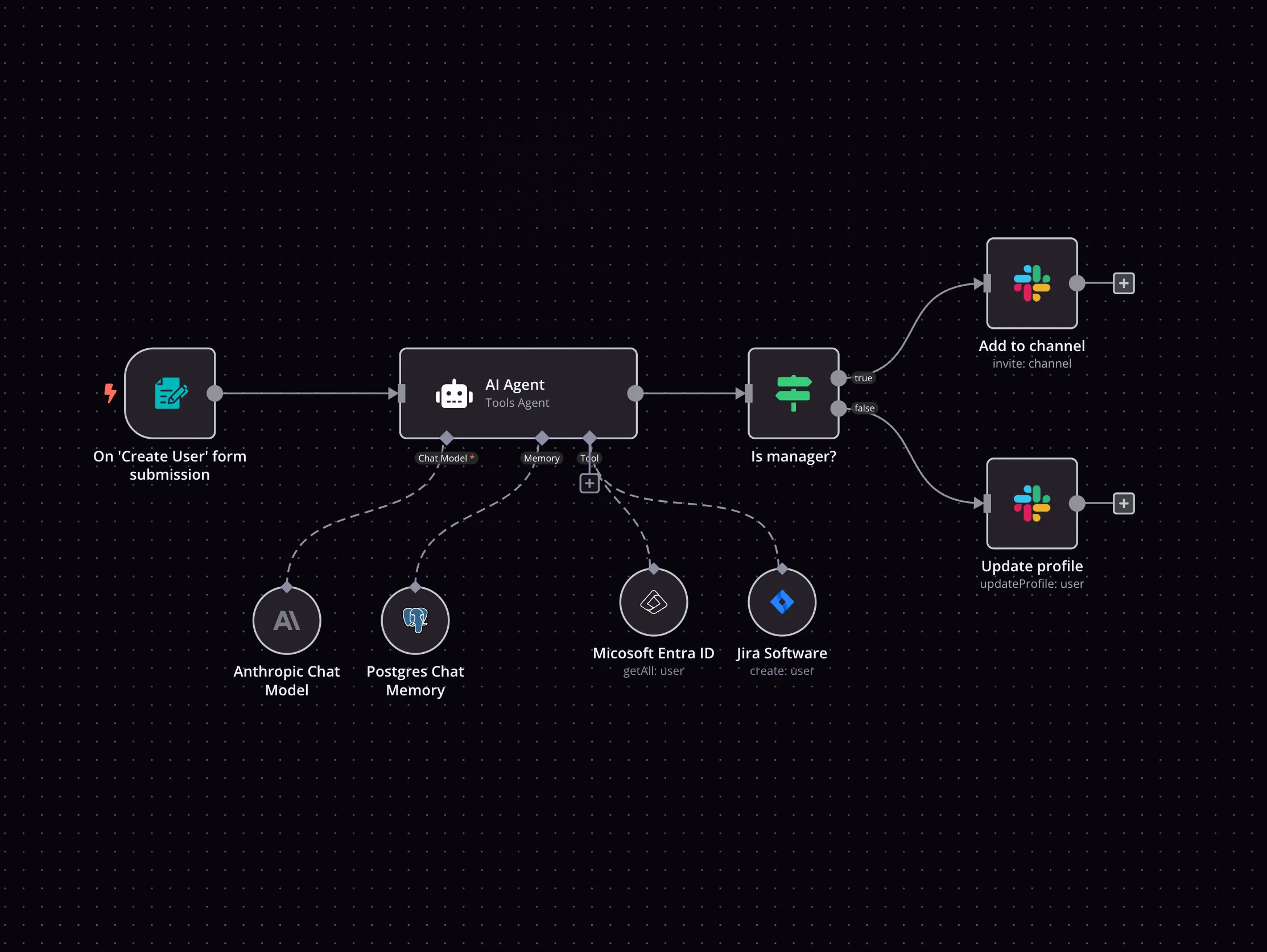Apify and Forms On Fire integration
Save yourself the work of writing custom integrations for Apify and Forms On Fire and use n8n instead. Build adaptable and scalable workflows that work with your technology stack. All within a building experience you will love.

How to connect Apify and Forms On Fire
Create a new workflow and add the first step
In n8n, click the "Add workflow" button in the Workflows tab to create a new workflow. Add the starting point – a trigger on when your workflow should run: an app event, a schedule, a webhook call, another workflow, an AI chat, or a manual trigger. Sometimes, the HTTP Request node might already serve as your starting point.
Build your own Apify and Forms On Fire integration
Create custom Apify and Forms On Fire workflows by choosing triggers and actions. Nodes come with global operations and settings, as well as app-specific parameters that can be configured. You can also use the HTTP Request node to query data from any app or service with a REST API.
What can you do with Apify?
Run an Actor
Runs an Actor. You can override the Actor’s input configuration by providing a custom body, which will override the prefilled input values.
Run an Actor and Get Dataset
Runs an Actor, waits for it to finish, and finally returns the dataset items
Scrape Single URL
Scrape a single URL using the Apify Website Content Crawler Actor and get its content as text, markdown, and HTML
Get Last Run
Retrieves the most recent run of an Actor. This endpoint is useful for quickly accessing the latest run details, including its status and storages, without needing to specify a run ID.
Run Task
Runs an Actor Task and return all associated details. You can optionally override the Actor’s input configuration by providing a custom body.
Run Task and Get Dataset
Runs an Actor task, waits for it to finish, and finally returns the dataset items. You can optionally override the Actor’s input configuration by providing a custom body.
Get User Runs List
Gets a list of Actor runs for the user. This endpoint is useful for retrieving a history of runs, their statuses, and other data.
Get run
Gets the details of a specific Actor run by its ID. This endpoint is useful for retrieving information about a run, such as its status, storages, and other metadata.
Get runs
Gets a list of Actor runs. This endpoint is useful for retrieving a history of runs, their statuses, and other data.
Get Items
Retrieves items from a dataset
Get Key-Value Store Record
Gets a value stored in the key-value store under a specific key
Supported API Endpoints for Forms On Fire
Get form
Returns the Published version of matching Forms or all versions of a single specified Form.
Get form screen
Returns the Form Screen matching the given parameters.
Get screen map search
Retrieves screen information for map search.
Search data sources
Finds all Data Sources matching the given parameters.
Get data source
Returns the Data Source matching the given parameters.
Search folders
Finds all Folders matching the given parameters.
Send push notification
Send a push notification to a specified user.
Send Push notification
This API allows you to send a push notification to a specified user.
Search form entries
Finds all Form Entries or all versions of a single specified Form.
Download form entry file
Download a media file captured on a given form Entry.
Get form entry
Returns the Form Entry matching the given parameters.
Search tasks
Finds all Tasks matching the given parameters.
Get task
Returns the Task matching the given parameters.
Search task
Searches for tasks.
Create task
Creates a new task.
Update task
Updates the details of a task.
Delete task
Deletes a task.
Get companies
Retrieve a list of companies based on search criteria.
List companies
Retrieve a list of companies.
Create company
Add a new company to the database.
Get company
Retrieve details of a specific company by its ID.
Create company
Create a new company in the system.
Update company
Updates the details of a company.
Get company
Retrieve details for a specific company.
Get data source
Retrieves information about a data source.
Update data source
Updates the details of a data source.
Get users
Retrieves a list of users.
Create user
Creates a new user.
Update user
Updates the details of a user.
Delete user
Deletes a user.
Delete usergroup
Deletes a user group.
Update usergroup
Updates the details of a user group.
Create usergroup
Creates a new user group.
Search usergroup
Searches for user groups.
Create repository API
Creates a new repository API.
To set up Forms On Fire integration, add the HTTP Request node to your workflow canvas and authenticate it using a generic authentication method. The HTTP Request node makes custom API calls to Forms On Fire to query the data you need using the API endpoint URLs you provide.
See the example hereThese API endpoints were generated using n8n
n8n AI workflow transforms web scraping into an intelligent, AI-powered knowledge extraction system that uses vector embeddings to semantically analyze, chunk, store, and retrieve the most relevant API documentation from web pages. Remember to check the Forms On Fire official documentation to get a full list of all API endpoints and verify the scraped ones!
Apify and Forms On Fire integration details
FAQ
Can Apify connect with Forms On Fire?
Can I use Apify’s API with n8n?
Can I use Forms On Fire’s API with n8n?
Is n8n secure for integrating Apify and Forms On Fire?
How to get started with Apify and Forms On Fire integration in n8n.io?
Looking to integrate Apify and Forms On Fire in your company?
The world's most popular workflow automation platform for technical teams including
Why use n8n to integrate Apify with Forms On Fire
Build complex workflows, really fast


